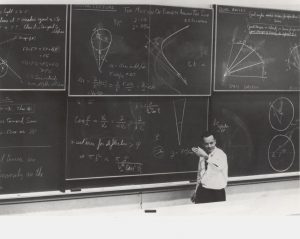The Sage on the Stage

The Sage on the Stage is a well-worn trope describing the old-style lecturer delivering content from the podium: a revered actor, deeming to bestow their knowledge upon grateful audience-students. It represents, we are told, everything that is the worst about education. Why, then, if this model is so terrible, do we still buy into it? We claim not to, and yet, we do, nonetheless. We pay a fortune to attend a symposium and listen to a lecture. We invite guest speakers to launches.
Could it be that we value the physical human presence? Perhaps, too, we value the presence and shared knowledge of specific individuals – experts, experienced teachers, leaders – ‘sages’ in their fields – and in order to hear them effectively, to allow us all to hear, we put them upon the stage. We do so because we want to hear their voices.
So, here’s the irony in so much online education: while decrying the sage on the stage, we actually perpetuate a hollowed-out form of that model, using recorded media to present the student with a static image of that performance – they can watch it as often as they like, but it never changes, it never responds.
More importantly, sage on the stage vs guide on the side is a false dichotomy, set up to dismiss the ‘old’ approach and prioritize the ‘new’; the educational theorist needs you to believe that they’re creating new knowledge, offering something different. I wrote about this at length in the post [Twenty] First Century Pedagogy.